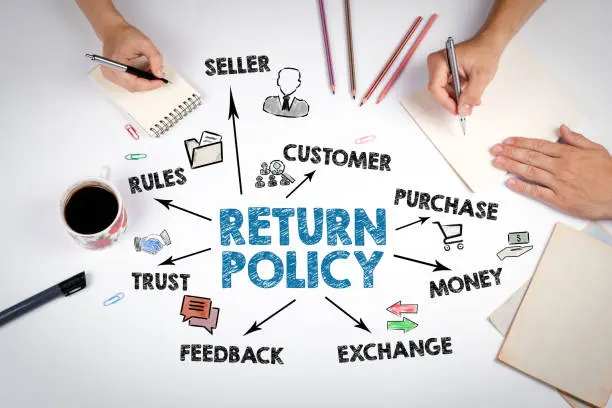Navigating the Dual Challenge: Rising Returns in Retail and Customs Costs

In the ever-evolving landscape of retail, one challenge looms larger than ever: returns. With the proliferation of e-commerce and the convenience it offers, the rate of returns has surged, posing complex logistical and financial challenges for retailers worldwide. According to industry reports, the rate of returns in online retail can be as high as 30%, compared to just 8-10% for brick-and-mortar stores.
In a recent report from Forbes, industry data demonstrates that the rate of returns are now growing faster than eCommerce itself.
However, amidst this tide of returns, another crucial factor exacerbates the complexity: customs costs. Additionally, the concept of duty-free returns adds another layer of consideration to the mix.
Returns have become an integral part of the retail experience, influencing consumer behavior and shaping brand perception. While returns offer opportunities for customer satisfaction and repeat business, they also present significant costs and operational challenges for retailers, particularly when it comes to navigating customs regulations.
Customs costs are a critical consideration in the management of returns, especially in cross-border transactions. Customs duties, taxes, and fees can significantly impact the financial implications of returns, adding another layer of complexity to the already intricate process. Failure to understand and account for these costs can result in unexpected expenses, eroding profitability and undermining business viability.
However, amidst the landscape of customs costs, there exists the concept of duty-free returns. This refers to goods that can be returned without incurring additional customs duties or taxes, or the possibility to claim them back. While duty-free returns can offer some relief from the financial burden of returns, they come with their own set of considerations.
Claiming back customs duties on returns can be a complex process for retailers navigating the intricacies of cross-border trade. When goods are returned to the country of origin, retailers may be eligible to recover the customs duties paid upon their initial import. However, the process typically involves detailed documentation and compliance with specific requirements set by customs authorities. Retailers must accurately track and record returned goods, provide entrance of the original customs declaration, and adhere to any applicable time limits for filing duty refund claims.
One of the primary challenges retailers face in managing returns is accurately assessing and forecasting customs costs. Each country has its own set of customs regulations and duty rates, making it essential for retailers to stay informed and compliant. Failure to do so can result in delays, fines, or even the seizure of goods, jeopardizing the entire return process and damaging customer relationships. Implementing advanced technology solutions can help retailers navigate customs costs more effectively. Automated systems can assist in calculating duties and taxes, generating accurate customs documentation, and optimizing compliance processes.
When it comes to duty-free returns, allowances vary by country and product category, making it essential for retailers to familiarize themselves with the relevant regulations.
By leveraging data analytics and predictive modeling, retailers can anticipate customs costs and factor them into their return management strategies, minimizing financial risks and enhancing operational efficiency.
Using a dedicated broker can significantly simplify the process of claiming back customs duties on returns for retailers. Brokers are experts in customs regulations and procedures, equipped with the knowledge and experience to navigate the complexities of duty refund claims efficiently. By leveraging their expertise, retailers can ensure: accurate documentation, timely submission of claims, and adherence to all relevant requirements.
Furthermore, proactive collaboration with customs authorities and logistics partners is essential for managing customs costs and streamlining the return process. Establishing transparent communication channels and sharing relevant information can facilitate smoother customs clearance, reducing the likelihood of delays and associated costs. In addition to customs duties and taxes, retailers must also consider the broader financial implications of returns, including transportation and handling costs. Reverse logistics, the process of managing returned goods, can be costly and resource-intensive, further impacting the bottom line. By optimizing reverse logistics processes and investing in sustainable packaging and disposal methods, retailers can mitigate costs while aligning with consumer expectations for responsible business practices.
In conclusion, the rising rate of returns in retail presents a dual challenge for retailers: managing the logistical complexities of returns while navigating the financial implications of customs costs.
By prioritizing compliance efforts, leveraging technology solutions, and fostering collaboration with experts, retailers can mitigate risks, optimize operations, and enhance customer satisfaction. Moreover, proactive consideration of customs costs and broader financial implications is essential for ensuring profitability and long-term success in today’s competitive retail landscape.
Does your company engage in high volumes of cross-border retail trade?
Trade Duty Refund is a dedicated broker that helps companies claim back duties paid on returned items.
Schedule a free discovery call to learn about our process and get an estimate of how much you can claim back. Trade Duty Refund can also help companies better understand customs regulations.